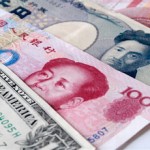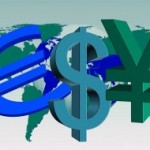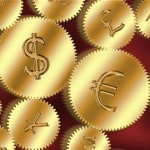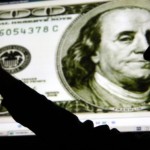Dollar Rises to 7-Year High Versus Yen on Economy; Aussie Slides
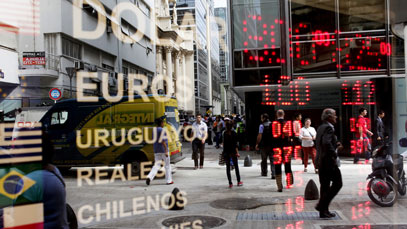
The dollar rose to a seven-year high versus the yen before data forecast to show U.S. manufacturing outpaced global peers, reinforcing the outlook for higher interest rates in the world’s largest economy.
The greenback extended gains against the currencies of commodity-producing nations and the Russian ruble fell amid a slump in oil. Australia’s dollar slid to a four-year low on speculation demand for the nation’s gold will wane after voters in Switzerland rejected a referendum to force its central bank to hold more of the metal. Australia is the world’s largest gold producer after China. The Swiss franc weakened.
“The dollar will probably remain strong amid declines in oil prices and dovishness among other nations’ central banks,” said Toshiya Yamauchi, a senior analyst in Tokyo at Ueda Harlow Ltd., which provides margin-trading services. “If oil prices continue to fall, that would build the case for easy monetary policy in more places than just Europe and Japan.”
The dollar rose 0.1 percent to 118.74 yen as of 7:29 a.m. in London, after touching 119.03, the most since August 2007. The U.S. currency rose 0.1 percent to $1.2442 per euro. The yen was little changed at 147.74 per euro.
The Bloomberg Dollar Spot Index, which tracks the U.S. currency against 10 trading partners, rose 0.1 percent to 1,107.57, heading for the highest closing since March 2009. The index posted a fifth monthly gain in November. An index of 20 major developing-nation exchange rates has fallen 8.9 percent over that time.
Ruble, Oil
The ruble fell 4.4 percent to 51.6602 per dollar, the most among emerging-market currencies.
The dollar extended gains after West Texas Intermediate fell below $65 a barrel to the lowest intraday level since July 2009 today. That extended a 10 percent drop from Nov. 28, the day after the Organization of Petroleum Exporting Countries decided to keep production targets unchanged.
“The dollar continues to be supported by the drop in oil prices,” said Daisaku Ueno, the Tokyo-based chief currency strategist at Mitsubishi UFJ Morgan Stanley Securities Co. “It’s positive for the U.S. economy, and as a result, we’re unlikely to see the Fed extend easy monetary policy.”
The Federal Reserve is moving to raise interest rates for the first time since 2006, while the Bank of Japan and European Central Bank ease monetary policy. Futures traders see about 53 percent odds that the U.S. benchmark rate will rise in October for the first time since 2006.
U.S. Recovery
The pace of U.S. manufacturing was faster than initially estimated in November, according to the median forecast of economists surveyed by Bloomberg News before Markit Economics releases the final reading today. An index measuring the business activity was at 55, versus a flash estimate of 54.7, according to the survey. Numbers above 50 signal expansion.
By contrast, China’s official manufacturing PMI fell to 50.3 last month, from 50.8 in October, and compared with a median analyst estimate of 50.5, a government report today showed. Japan’sreading, as measured by Markit Economics, was at 52, while economists estimate the German gauge was 50.
Australia’s dollar dropped after the “Save Our Swiss Gold” proposal, stipulating the Swiss National Bank hold at least 20 percent of its balance sheet in gold and never sell any bullion, was voted down by 77 percent to 23 percent. Swiss President Thomas Jordan had termed the measure an “invitation to speculators” that could have hurt the economy.
“Gold is an important driver of the Aussie dollar,” said Raiko Shareef, a markets analyst at Bank of New Zealand Ltd. in Wellington. “Sentiment is quite fragile in Aussie right now given what’s happening in metals generally.”
Aussie, Franc
The Aussie lost 0.8 percent to 84.38 U.S. cents, after touching 84.17 cents, the least since July 2010. New Zealand’s currency slid 0.4 percent to 78.09 U.S. cents. The Aussie and kiwi fell for a third day.
Gold slumped 1 percent to $1,156.04 per ounce, following a 2 percent slide on Nov. 28.
The Swiss franc fell 0.1 percent to 96.65 centimes per dollar. It was little changed at 1.20279 per euro, compared with the SNB’s 1.20-per-euro cap.
“The SNB will continue to enforce the minimum exchange rate with the utmost determination and is prepared to buy foreign currency in unlimited quantities,” the central bank said in a statement yesterday. “The SNB will take further measures immediately if required.”
Source: Bloomberg – Dollar Rises to 7-Year High Versus Yen on Economy; Aussie Slides
Latest update: Dollar Declines From Five-Year High on Sign Climb Was Too Fast









